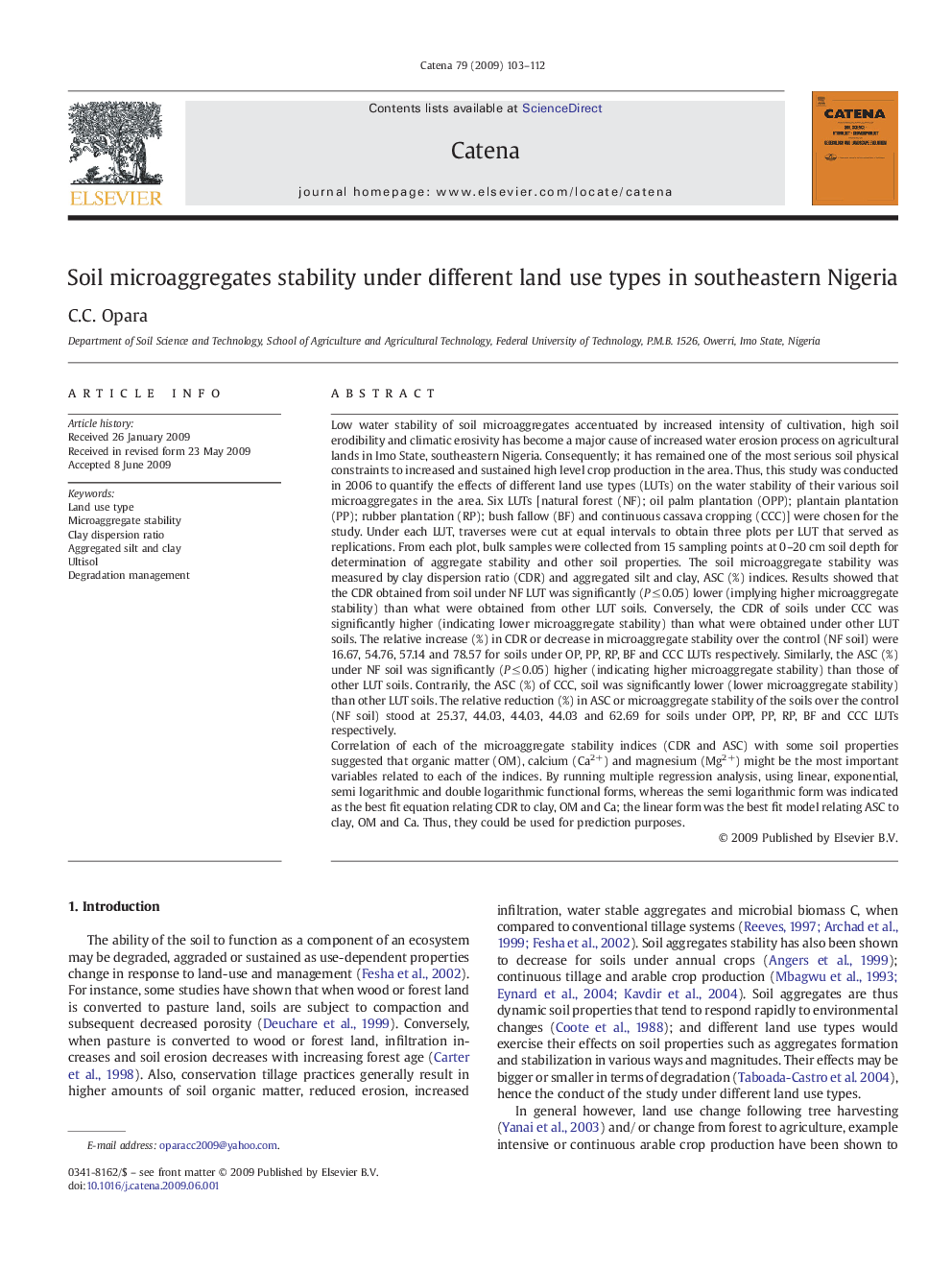| کد مقاله | کد نشریه | سال انتشار | مقاله انگلیسی | نسخه تمام متن |
|---|---|---|---|---|
| 4572293 | 1332166 | 2009 | 10 صفحه PDF | دانلود رایگان |

Low water stability of soil microaggregates accentuated by increased intensity of cultivation, high soil erodibility and climatic erosivity has become a major cause of increased water erosion process on agricultural lands in Imo State, southeastern Nigeria. Consequently; it has remained one of the most serious soil physical constraints to increased and sustained high level crop production in the area. Thus, this study was conducted in 2006 to quantify the effects of different land use types (LUTs) on the water stability of their various soil microaggregates in the area. Six LUTs [natural forest (NF); oil palm plantation (OPP); plantain plantation (PP); rubber plantation (RP); bush fallow (BF) and continuous cassava cropping (CCC)] were chosen for the study. Under each LUT, traverses were cut at equal intervals to obtain three plots per LUT that served as replications. From each plot, bulk samples were collected from 15 sampling points at 0–20 cm soil depth for determination of aggregate stability and other soil properties. The soil microaggregate stability was measured by clay dispersion ratio (CDR) and aggregated silt and clay, ASC (%) indices. Results showed that the CDR obtained from soil under NF LUT was significantly (P ≤ 0.05) lower (implying higher microaggregate stability) than what were obtained from other LUT soils. Conversely, the CDR of soils under CCC was significantly higher (indicating lower microaggregate stability) than what were obtained under other LUT soils. The relative increase (%) in CDR or decrease in microaggregate stability over the control (NF soil) were 16.67, 54.76, 57.14 and 78.57 for soils under OP, PP, RP, BF and CCC LUTs respectively. Similarly, the ASC (%) under NF soil was significantly (P ≤ 0.05) higher (indicating higher microaggregate stability) than those of other LUT soils. Contrarily, the ASC (%) of CCC, soil was significantly lower (lower microaggregate stability) than other LUT soils. The relative reduction (%) in ASC or microaggregate stability of the soils over the control (NF soil) stood at 25.37, 44.03, 44.03, 44.03 and 62.69 for soils under OPP, PP, RP, BF and CCC LUTs respectively.Correlation of each of the microaggregate stability indices (CDR and ASC) with some soil properties suggested that organic matter (OM), calcium (Ca2+) and magnesium (Mg2+) might be the most important variables related to each of the indices. By running multiple regression analysis, using linear, exponential, semi logarithmic and double logarithmic functional forms, whereas the semi logarithmic form was indicated as the best fit equation relating CDR to clay, OM and Ca; the linear form was the best fit model relating ASC to clay, OM and Ca. Thus, they could be used for prediction purposes.
Journal: CATENA - Volume 79, Issue 2, 15 November 2009, Pages 103–112